Carla Gordon
EJ
Interactive Evaluation of Dialog Track at DSTC9
Jul 28, 2022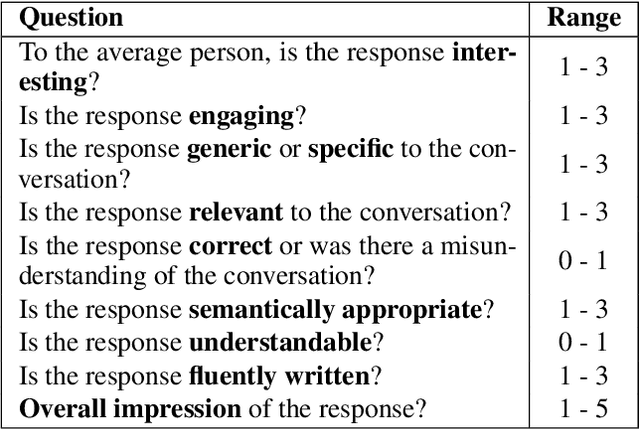
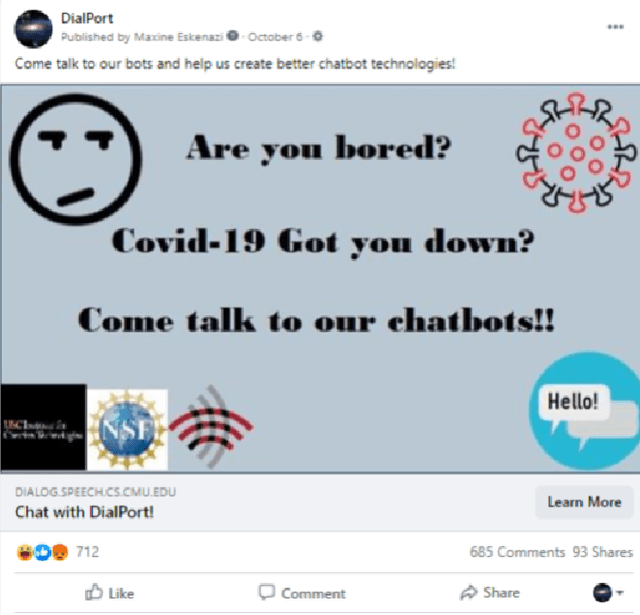
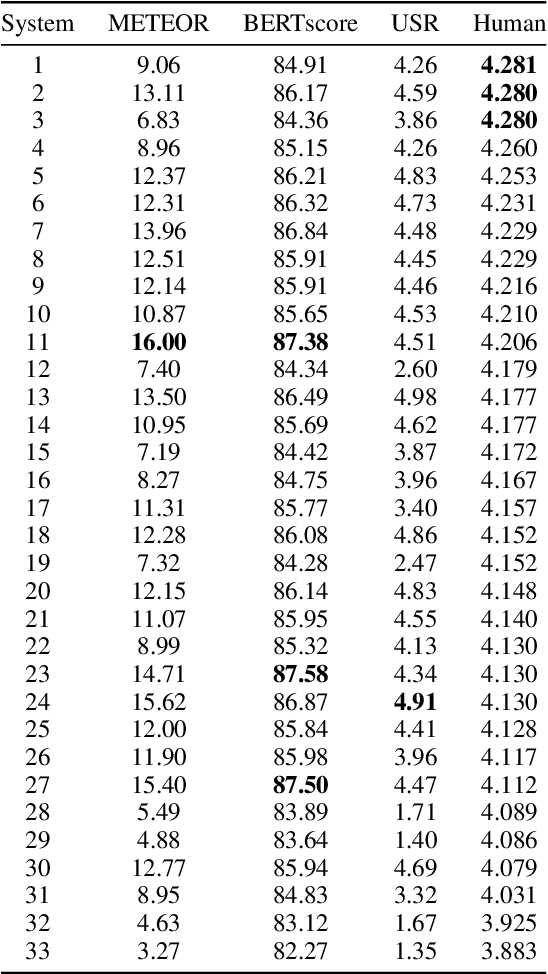
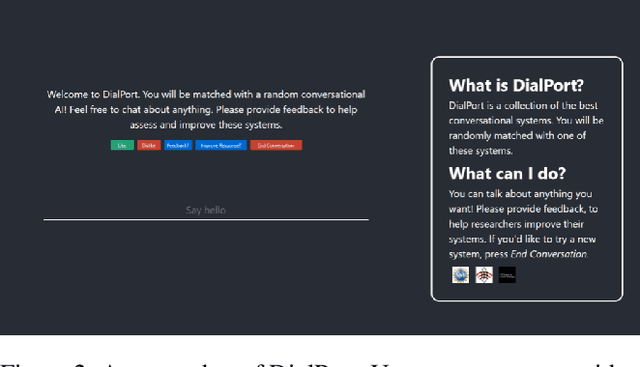
Abstract:The ultimate goal of dialog research is to develop systems that can be effectively used in interactive settings by real users. To this end, we introduced the Interactive Evaluation of Dialog Track at the 9th Dialog System Technology Challenge. This track consisted of two sub-tasks. The first sub-task involved building knowledge-grounded response generation models. The second sub-task aimed to extend dialog models beyond static datasets by assessing them in an interactive setting with real users. Our track challenges participants to develop strong response generation models and explore strategies that extend them to back-and-forth interactions with real users. The progression from static corpora to interactive evaluation introduces unique challenges and facilitates a more thorough assessment of open-domain dialog systems. This paper provides an overview of the track, including the methodology and results. Furthermore, it provides insights into how to best evaluate open-domain dialog models
Overview of the Ninth Dialog System Technology Challenge: DSTC9
Nov 12, 2020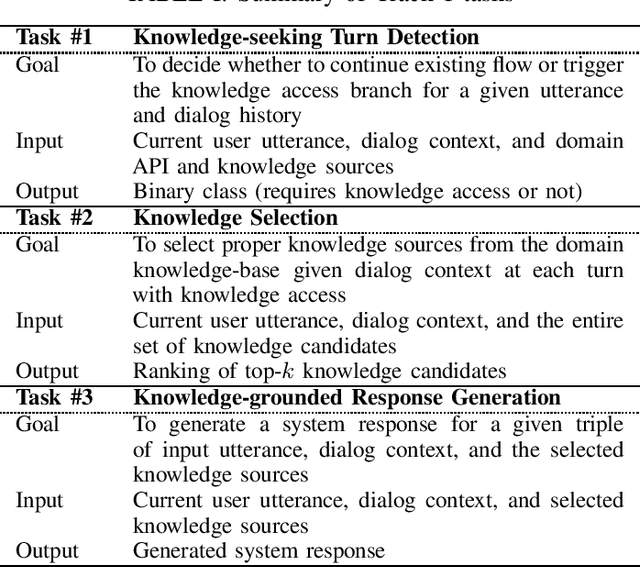


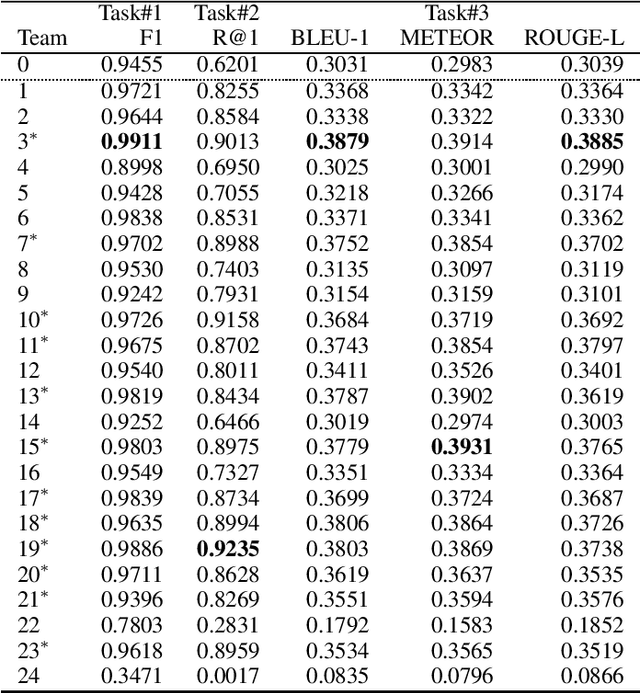
Abstract:This paper introduces the Ninth Dialog System Technology Challenge (DSTC-9). This edition of the DSTC focuses on applying end-to-end dialog technologies for four distinct tasks in dialog systems, namely, 1. Task-oriented dialog Modeling with unstructured knowledge access, 2. Multi-domain task-oriented dialog, 3. Interactive evaluation of dialog, and 4. Situated interactive multi-modal dialog. This paper describes the task definition, provided datasets, baselines and evaluation set-up for each track. We also summarize the results of the submitted systems to highlight the overall trends of the state-of-the-art technologies for the tasks.
Balancing Efficiency and Coverage in Human-Robot Dialogue Collection
Oct 07, 2018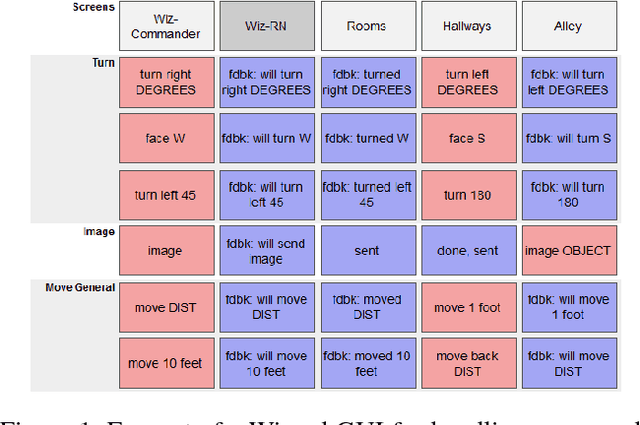
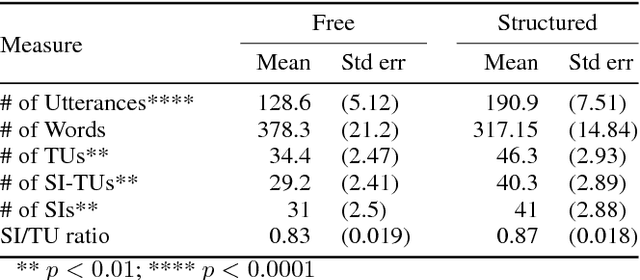
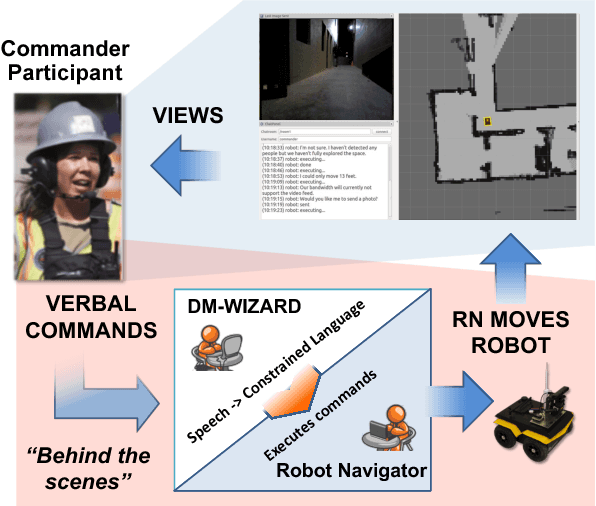
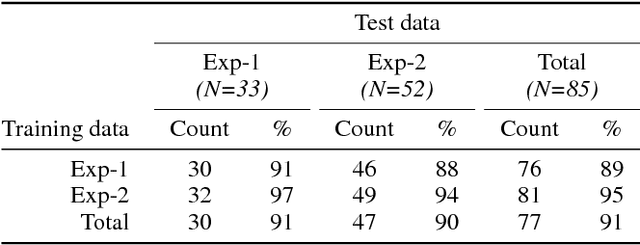
Abstract:We describe a multi-phased Wizard-of-Oz approach to collecting human-robot dialogue in a collaborative search and navigation task. The data is being used to train an initial automated robot dialogue system to support collaborative exploration tasks. In the first phase, a wizard freely typed robot utterances to human participants. For the second phase, this data was used to design a GUI that includes buttons for the most common communications, and templates for communications with varying parameters. Comparison of the data gathered in these phases show that the GUI enabled a faster pace of dialogue while still maintaining high coverage of suitable responses, enabling more efficient targeted data collection, and improvements in natural language understanding using GUI-collected data. As a promising first step towards interactive learning, this work shows that our approach enables the collection of useful training data for navigation-based HRI tasks.
 Add to Chrome
Add to Chrome Add to Firefox
Add to Firefox Add to Edge
Add to Edge